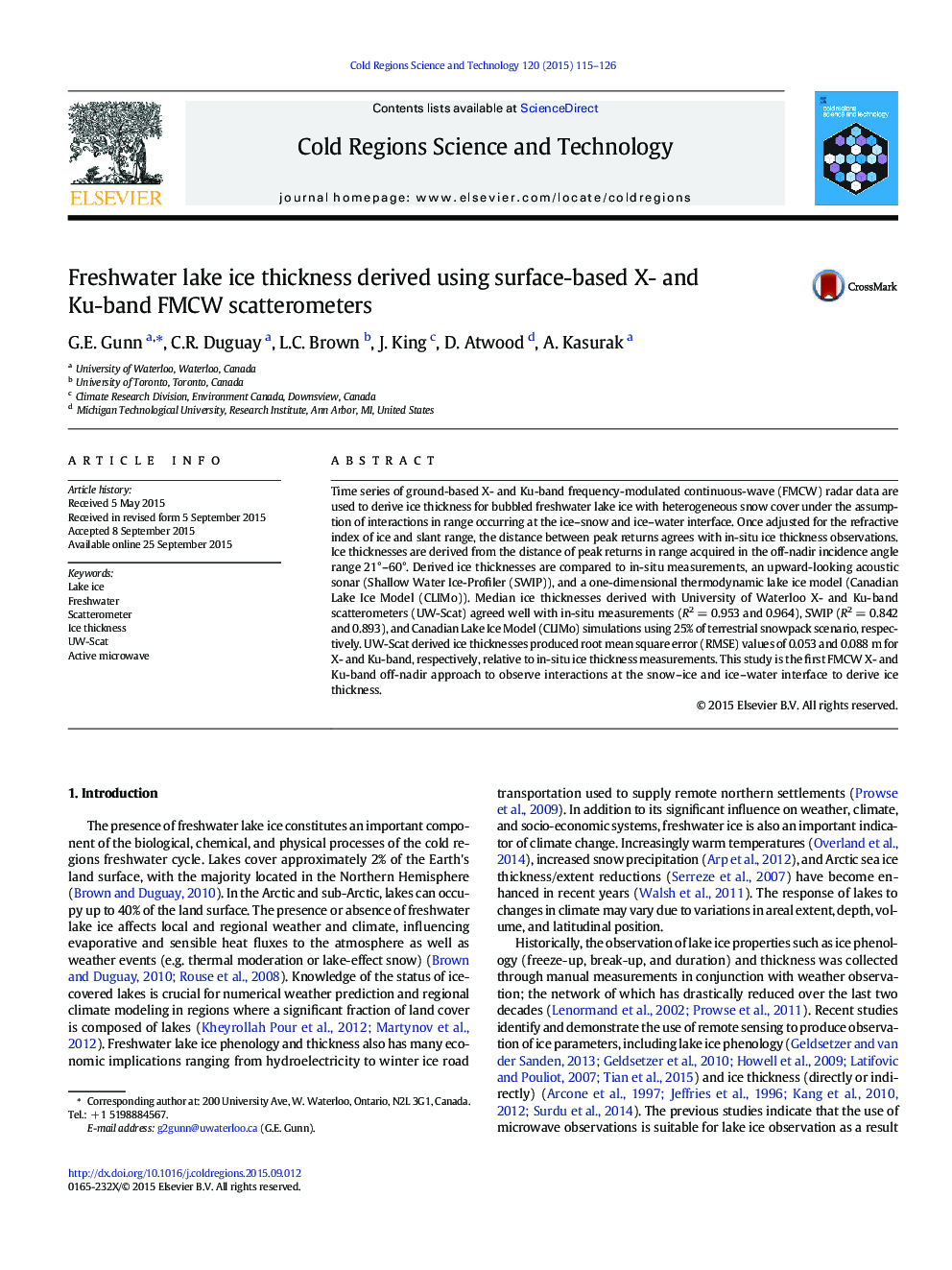| Article ID | Journal | Published Year | Pages | File Type |
|---|---|---|---|---|
| 6426707 | Cold Regions Science and Technology | 2015 | 12 Pages |
Abstract
Time series of ground-based X- and Ku-band frequency-modulated continuous-wave (FMCW) radar data are used to derive ice thickness for bubbled freshwater lake ice with heterogeneous snow cover under the assumption of interactions in range occurring at the ice-snow and ice-water interface. Once adjusted for the refractive index of ice and slant range, the distance between peak returns agrees with in-situ ice thickness observations. Ice thicknesses are derived from the distance of peak returns in range acquired in the off-nadir incidence angle range 21°-60°. Derived ice thicknesses are compared to in-situ measurements, an upward-looking acoustic sonar (Shallow Water Ice-Profiler (SWIP)), and a one-dimensional thermodynamic lake ice model (Canadian Lake Ice Model (CLIMo)). Median ice thicknesses derived with University of Waterloo X- and Ku-band scatterometers (UW-Scat) agreed well with in-situ measurements (R2 = 0.953 and 0.964), SWIP (R2 = 0.842 and 0.893), and Canadian Lake Ice Model (CLIMo) simulations using 25% of terrestrial snowpack scenario, respectively. UW-Scat derived ice thicknesses produced root mean square error (RMSE) values of 0.053 and 0.088 m for X- and Ku-band, respectively, relative to in-situ ice thickness measurements. This study is the first FMCW X- and Ku-band off-nadir approach to observe interactions at the snow-ice and ice-water interface to derive ice thickness.
Related Topics
Physical Sciences and Engineering
Earth and Planetary Sciences
Earth and Planetary Sciences (General)
Authors
G.E. Gunn, C.R. Duguay, L.C. Brown, J. King, D. Atwood, A. Kasurak,
